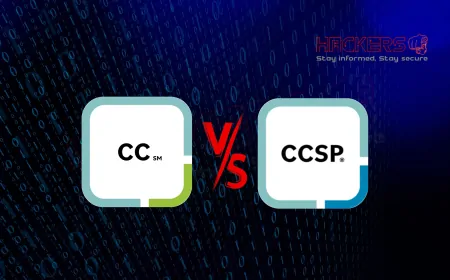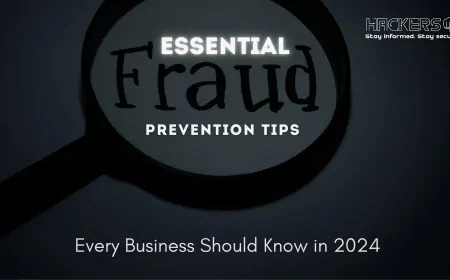What Are the Common Mistakes Companies Make in IoT Security?
A major retailer wakes up to find its smart refrigerators have been hacked. Customer credit card data is gone. A hospital’s connected IV pumps stop working during surgery. A factory’s robotic arms start smashing products. These aren’t movie plots. They’re real consequences of IoT security done wrong. The Internet of Things (IoT) is now in every industry: retail, healthcare, manufacturing, logistics, and more. By 2030, over 25 billion devices will be online. That’s a goldmine of data and control. But it’s also a minefield. Companies rush to connect everything, then wonder why they’re breached. The problem? They make the same mistakes over and over. In this blog post, we’ll walk through the top 12 blunders businesses make in IoT security, why they happen, and how to fix them. Whether you’re a CEO, IT manager, or just starting with smart sensors, this guide will help you avoid disaster and build trust. Let’s get it right from the start.

Table of Contents
- Why IoT Security Mistakes Are So Common
- The 12 Biggest IoT Security Mistakes Companies Make
- Real-World Breaches Caused by These Mistakes
- Secure vs. Insecure IoT Deployment: A Comparison
- How to Fix Each Mistake: Practical Solutions
- Your IoT Security Checklist: Avoid the Traps
- The Hidden Cost of IoT Security Failures
- The Future: Learning from Mistakes
- Conclusion: Don’t Be the Next Cautionary Tale
- Frequently Asked Questions
Why IoT Security Mistakes Are So Common
IoT is new, complex, and fast-moving. Companies face pressure to innovate quickly. Security often takes a back seat. Here’s why errors happen:
- Speed over safety: “Connect first, secure later.”
- Lack of expertise: IT teams know servers, not sensors.
- Budget cuts: Security is seen as a cost, not an investment.
- Fragmented responsibility: No one owns IoT security end-to-end.
- Legacy thinking: Applying old network rules to new devices.
- Vendor trust: Assuming suppliers did it right.
Result? Predictable, preventable breaches.
The 12 Biggest IoT Security Mistakes Companies Make
Here are the most common, costly errors:
Mistake 1: Using Default Passwords
Devices ship with “admin/admin”. No one changes them. Hackers scan and log in.
Mistake 2: Skipping Firmware Updates
Old software has known flaws. Teams ignore alerts or disable auto-updates.
Mistake 3: No Network Segmentation
IoT devices sit on the same network as laptops and servers. One breach spreads everywhere.
Mistake 4: Ignoring Device Identity
Any device can join the network. No unique IDs or certificates.
Mistake 5: Weak or No Encryption
Data travels in plain text. Anyone with a sniffer reads it.
Mistake 6: Poor Vendor Management
Third-party devices have backdoors. No security audits before purchase.
Mistake 7: No Monitoring or Logging
Devices act strangely for weeks. No one notices until it’s too late.
Mistake 8: Overlooking Physical Security
Sensors in public areas are tampered with. No tamper alerts.
Mistake 9: Rushing Deployment
“Proof of concept” becomes production without security review.
Mistake 10: No Employee Training
Workers plug in rogue devices or click phishing links that infect IoT.
Mistake 11: Assuming Cloud Is Secure
Cloud provider is safe, but device-to-cloud link isn’t encrypted.
Mistake 12: No Incident Response Plan
When breached, teams panic. No playbook for IoT-specific recovery.
Any one of these can sink a company. Together? Catastrophic.
Real-World Breaches Caused by These Mistakes
These companies paid the price:
- Target (2013): HVAC vendor’s weak IoT credentials let hackers into the main network. 40 million cards stolen.
- Casino Fish Tank (2018): Internet-connected thermometer had no encryption. Hackers used it to steal VIP data.
- Verkada (2021): Default passwords on 150,000 cameras exposed hospitals, jails, schools.
- Colonial Pipeline (2021): IoT operational systems compromised via outdated VPN. Fuel shortage across East Coast.
- Ubiquiti (2021): Insider used weak IoT access to steal source code. Cost: $50M in stock drop.
Every breach traced back to one or more of the 12 mistakes.
Secure vs. Insecure IoT Deployment: A Comparison
See the difference side by side:
| Practice | Secure Deployment | Insecure Deployment | Outcome |
|---|---|---|---|
| Passwords | Unique, auto-generated | Default admin/admin | Immediate access for hackers |
| Network | Segmented VLANs | Flat network | Lateral movement easy |
| Updates | Auto, signed OTA | Manual or none | Known exploits active |
| Monitoring | SIEM with IoT rules | None | Silent infections |
Secure isn’t harder. It’s smarter.
How to Fix Each Mistake: Practical Solutions
Turn errors into strengths:
Fix 1: Enforce Unique Passwords
Use device provisioning tools to auto-generate strong credentials at setup.
Fix 2: Automate Firmware Updates
Use MDM or IoT platforms (AWS IoT, Azure IoT) to push signed updates silently.
Fix 3: Segment Networks
Put IoT on guest VLANs. Use firewalls to block device-to-device talk.
Fix 4: Issue Digital Certificates
Every device gets a unique X.509 certificate. Revoke if compromised.
Fix 5: Encrypt Everything
Use TLS 1.3 for data in transit. AES-256 for data at rest.
Fix 6: Audit Vendors
Require SOC 2, ISO 27001, or PSA Certified. Test devices in a lab before rollout.
Fix 7: Monitor 24/7
Use tools like Nozomi, Armis, or Ordr to watch IoT traffic for anomalies.
Fix 8: Add Tamper Protection
Use sealed cases, motion sensors, and alerts if devices are moved.
Fix 9: Secure the SDLC
Include security in design, testing, and deployment phases. No shortcuts.
Fix 10: Train Everyone
Monthly phishing drills. IoT safety modules for all staff.
Fix 11: Secure the Full Chain
Encrypt device to gateway to cloud. Use mutual TLS.
Fix 12: Build an IoT IR Plan
Define roles, containment steps, and recovery for smart devices.
Start with one fix per month. Build momentum.
Your IoT Security Checklist: Avoid the Traps
Print this. Use it before every deployment:
- All devices have unique, strong passwords
- Auto-updates enabled and monitored
- IoT on separate network segment
- Digital certificates issued and managed
- Encryption in transit and at rest
- Vendors audited and certified
- Real-time monitoring in place
- Physical security measures active
- Security built into development lifecycle
- All employees trained annually
- Full-stack encryption verified
- IoT-specific incident plan tested quarterly
Check all boxes? You’re ahead of 90 percent of companies.
The Hidden Cost of IoT Security Failures
Breaches aren’t cheap:
- Direct Costs: Ransom, fines (up to 4% of revenue under GDPR), legal fees.
- Downtime: Factory offline for days. $1M+ per hour in some industries.
- Reputation: Customers flee. Stock drops 10 to 30 percent.
- Compliance: Lost certifications. Blocked from government contracts.
- Remediation: New hardware, consultants, PR firms.
Average cost of an IoT breach in 2025: $5.2 million (IBM). Prevention costs 10x less.
The Future: Learning from Mistakes
IoT security is maturing:
- Regulations: EU Cyber Resilience Act, US IoT labels mandate updates and transparency.
- Standards: Matter, PSA Certified, ETSI EN 303 645 become default.
- AI Defense: Auto-detect and isolate rogue devices in seconds.
- Zero Trust IoT: No device trusted by default. Constant verification.
- Secure by Design: Governments ban default passwords globally.
The companies that fix mistakes now will lead tomorrow.
Conclusion: Don’t Be the Next Cautionary Tale
IoT is transforming business. It’s also transforming risk. The 12 mistakes we covered, default passwords, no updates, flat networks, and more, aren’t rare oversights. They’re epidemic. But they’re fixable. Start with awareness. Audit your devices today. Segment tomorrow. Train next week. Encrypt next month. Security isn’t a one-time project. It’s a culture. The cost of failure is too high: millions in losses, shattered trust, even lives at risk in healthcare or infrastructure. The reward for getting it right? Resilience, innovation, and customer loyalty. You don’t need a PhD in cybersecurity. You need a plan, a checklist, and commitment. Avoid these common traps. Build IoT that works for your business, not against it. The future is connected. Make sure it’s also secure.
Frequently Asked Questions
What is the biggest IoT security mistake?
Using default passwords. It’s the easiest way for hackers to take control.
Why do companies skip firmware updates?
Fear of breaking devices, lack of automation, or no ownership of the process.
Should IoT devices be on the same network as computers?
No. Always segment IoT traffic to limit damage if compromised.
How can I secure old IoT devices?
Isolate them, use a secure gateway, or replace them if unsupported.
Do I need to encrypt IoT data?
Yes. Use TLS for transit and AES for storage. Unencrypted data is public.
Who is responsible for IoT security in a company?
Everyone. But CISO, IT, and operations must lead and collaborate.
Can vendors be trusted with IoT security?
Not blindly. Audit their practices, certifications, and update history.
What’s the easiest IoT security win?
Change all default passwords during setup. Takes minutes, stops most attacks.
Do I need special tools to monitor IoT?
Yes. Traditional firewalls miss IoT. Use Nozomi, Claroty, or Armis.
Is physical security important for IoT?
Absolutely. A tampered sensor in a factory can cause chaos.
Why do employees cause IoT breaches?
They plug in unauthorized devices or fall for phishing that spreads to IoT.
Does the cloud secure my IoT devices?
No. You must secure the device, connection, and cloud configuration.
What’s in an IoT incident response plan?
Steps to isolate devices, preserve evidence, notify stakeholders, and recover.
How much does an IoT breach cost?
Average $5.2 million in 2025, including fines, downtime, and reputation damage.
Are there laws for IoT security?
Yes. GDPR, CCPA, UK PSTI, and EU CRA require updates, transparency, and more.
Can AI prevent IoT security mistakes?
It helps detect anomalies, but human oversight and policy are still key.
Should I ban IoT to avoid risk?
No. Secure it properly. The benefits outweigh the risks when done right.
How do I train staff on IoT security?
Short monthly sessions, phishing tests, and clear device policies.
What’s zero trust for IoT?
Never trust any device. Verify identity and behavior every time.
How can I start fixing IoT security today?
Inventory all devices. Change default passwords. Enable updates. Segment networks.
What's Your Reaction?






























































